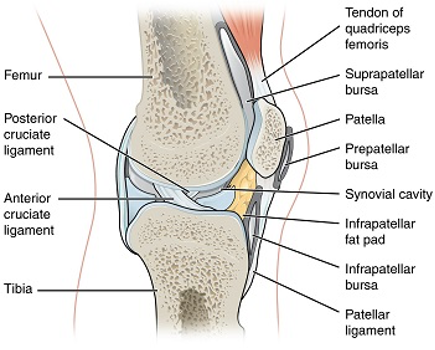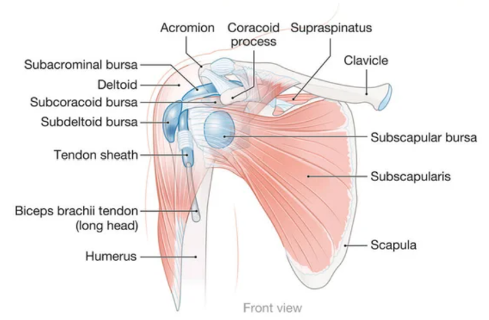
What are Bursae?
By Jack Nuske
08/06/2022
Part 1:
Bursae are fluid filled sacs that are usually located in areas where moving tissues (bones, tendons, muscles) travel very closely to each other. Their job is much like engine oil in a motor: to reduce friction between parts as they slide, glide, shift or roll against one another. However, instead of motor oil (thankfully), the fluid contained within bursae is what is known as synovial fluid. Synovial fluid is also present throughout the body within joint capsules, again acting as a lubricant allowing for smooth movement between articular surfaces of bones. In the knee image below, the light blue area is the synovial cavity.

Back to the bursae: the outer layer of the bursa is called the synovial membrane, a type of connective tissue that produces the synovial fluid contained within the sac. Now, since bursae (plural for bursa) are found close to joints and muscle attachments, some of the most common ones we see injuries to are in the shoulder, elbow, hip and knee. If you sustain an injury to these structures, you can imagine how it could affect the movement of these joints. In the diagrams below you can see how the bursae shown sit in between structures that would typically rub together without friction.

Coming up next, we’ll explore what an injury to these structures looks like and the treatment options!
 Instagram
Instagram Social | News
Social | News




